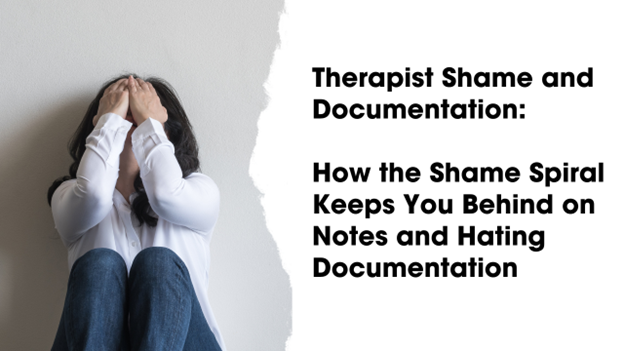EMDR Therapy Note-Writing Tips
Therapy focuses on a patient's concerns in the present while addressing past issues that might influence their current situation. If you offer eye movement desensitization and reprocessing (EMDR) therapy, you work with patients to help them process traumatic events from their past. EMDR therapy is considerably different from other forms of treatment, such as cognitive-behavioral therapy (CBT) or talk therapy.
It's considerably more structured and typically lasts for no more than 12 sessions. If you're a therapist trained in EMDR and are offering it to patients, here's how you can structure your EMDR therapy notes and EMDR worksheets for the best results. If you're a therapist interested in learning more about the therapy, reviewing EMDR resources and tips can help you determine if it's a methodology you'd like to pursue.
Table of Contents
What EMDR Therapy Is and How It Works
Created by psychologist Francine Shapiro, EMDR therapy dates back to the late 1980s. Dr. Shapiro developed EMDR to treat post-traumatic stress disorder (PTSD). One of the keys to EMDR therapy is the Adaptive Information Processing model, also developed by Dr. Shapiro.
The model operates under the framework that PTSD symptoms and the symptoms of similar disorders stem from a person's past experiences that the brain has not fully processed yet. The memories connected to the experiences are full of beliefs, emotions and physical sensations that occurred simultaneously to the triggering event. Recalling the experience unleashes the unpleasant emotions, thoughts and sensations, bringing on PTSD symptoms.
EMDR therapy is notably different from other treatment models. The therapist doesn't ask a patient to reflect on or discuss the traumatic experience during EMDR. Instead, the patient focuses on the memory and aims to change their brain's relationship with it. A therapist leads the patient through eye movements whenever the patient recalls the triggering experience. Once the therapy has successfully altered the memory in the brain, a patient's symptoms should dissipate.
EMDR is an example of short-term therapy. Sessions typically take place once or twice a week. Patients often have between six and 12 sessions. Some people get the full benefit of the therapy from fewer sessions. The American Psychological Association (APA) conditionally recommends EMDR therapy as a PTSD treatment.
The therapy consists of eight phases:
- History taking and planning
- Preparation
- Assessment
- Treatment: Desensitization
- Treatment: Installation
- Treatment: Body Scan
- Treatment: Closure
- Re-evaluation
EMDR Therapy Notes
The notes you take when working with a patient depend on the phase of EMDR you're focusing on. Although there are eight phases, the typical length of EMDR therapy is anywhere from six to 12 sessions. That means you might spend one session on a patient's history and two or more sessions on preparation. The last two phases, closure and re-evaluation, occur during every session.
While CBT and other types of therapy typically have 45-minute sessions, the average EMDR session is about 90 minutes.
Client History
A clinician doesn't immediately jump into performing EMDR therapy on a patient. Instead, it's critical to get a complete history from them first. History taking and planning is the first EMDR phase. It can take between one and two sessions to complete.
As you gather the patient's history, take notes on what they tell you. The history-taking sessions usually take a three-pronged approach. You'll ask the patient about:
- Memories from the past
- Issues/disturbances in the present
- Future goals/actions
During the history-taking sessions, you'll work with the client to determine which memory is the most distressing to them. You'll then focus on that memory or experience first.
It's important to remember that one feature that sets EMDR apart from other treatment models is that your patient doesn't have to dwell on or go into detail about their most challenging memory. You can ask them questions about the issue and take notes on it, but you don't need to get a complete picture of exactly what happened for the therapy to be effective.
To start history taking, ask the patient what problem they want to address. Once they respond, you can ask for more details, such as:
- When it happens
- Who's involved
- When did it first start
- What about it upsets the patient
Also, part of the patient's history is identifying disturbing events in their past. You can ask the patient to describe these events and give you a general age or year when they occurred. In your notes, lay out the events in a timeline so you can easily visualize what happened when.
Once you have a general history, examine how past events affect the patient's present. Some questions to ask include:
- When was the last time you experienced the issue?
- How did you feel when it happened? What did you experience in your body when it took place?
- What was the worst part of the situation (an image, smell, noise, emotion or sensation)?
- What negative beliefs do you have about that situation?
The history should also include the patient's thoughts on the future. Two questions to ask and make a note of the answers to are:
- When do you see the situation happening again in the future?
- How do you want to respond if the situation were to occur again?
Preparation
After gathering the patient's history, it's essential to prepare them for EMDR treatment. During the preparation stage, you'll explain what will happen in EMDR.
Another way to look at the preparation phase is as the trust-building stage. Your patients must trust you, or their therapy won't be effective. One way to establish trust with them is to show them ways to calm themselves or relax when they start to feel uncomfortable or stressed during a session. You can use the Safe/Calm Place exercise to do so.
The Safe/Calm Place exercise allows patients to establish a calm place in their minds before processing their trauma or experience. You can walk your patients through the exercise by asking the following:
- What image represents a place that you find safe and calming? Ask the patient to describe the place. Take notes on their response.
- What emotions or sensations do you experience when you think of the place? Note any images, sounds or smells the patient describes in their response.
- Can you tell me more? Ask the patient to delve deeper into the emotions and sensations they feel.
- Can you follow my finger? Have the patient think of their calm place and the sensations it creates, then ask them to follow your finger with their eyes. You might need to repeat this several times until the patient feels better.
- Can you think of a cue word? Ask the patient to summarize the image of their calm/safe place with a single word. Note this word down, as it is their cue word.
- Can you self-cue? Ask the patient to think of their cue word and note how they feel.
Assessment
After preparing the patient, teaching them the eye movements and walking them through the Safe/Calm place exercise, you're ready to begin the assessment phase of EMDR. When assessing a patient, you'll use two scales: the validity of cognition scale (VOC) and the subjective units of disturbance scale (SUD).
Before applying either scale, the patient needs to identify a particularly distressing image from the experience you're targeting. Ask your patient to describe a mental picture or image from the event. Note the image, then ask them to state a negative self-belief, or negative cognition, about the experience. Examples include, "I am bad," "I can't be loved," "I am weak."
Note the patient's negative self-belief, then ask them to choose a positive cognition or belief. The goal here is to give the patient a sense of control, so ideally, the positive cognition will be the reverse of the negative belief. For example, "I am good," "I am loveable," "I am strong."
Assess the patient's stance on the positive belief by asking them to rate it on a VOC scale of one to seven. One is entirely false, and seven is entirely true. Next, ask them to rate how disturbing the negative emotion is on a scale of zero to 10. Zero is no disturbance, while 10 is the most disturbance.
The VOC and SUD scale let you assess how a patient progresses once you begin the treatment phases. Keep note of their responses from session to session. Ideally, the SUD will become lower, and the VOC will increase as they progress.
Treatment
EMDR treatment involves four phases, which may occur in a single session. As you begin a treatment session with a patient, it's important to note down the following:
- The issue: What the patient is focusing on in the session today.
- The positive cognition: Record the patient's positive belief.
- The negative cognition: Record the patient's negative belief.
- The treatment session: Record the session number, such as 1, 2 or 3.
- The prong you're addressing: Note whether you're addressing a past concern, present issue or future goal.
- Interventions used: Note any interventions you used in the session, such as the Safe/Calm place exercise.
- Outcome of session: Record how the session turned out. Is the patient finished with treatment, or should they return?
- Patient status: How is the patient at the end of the session? Do they seem unstable, stable or excellent?
- Other planned treatments: Are you using other therapies to help the patient aside from EMDR?
Desensitization
The fourth phase of EMDR and the first part of treatment is desensitization. The goal of desensitization is to transform the memory from something distressing into something that no longer bothers the patient. To do this, you ask the patient to perform bilateral stimulation, such as eye movements, while thinking of the memory. Ask the patient to follow your finger with their eyes while concentrating on the negative cognition and the image. Ask them to pay attention to how they feel in their body while this is happening.
The goal of desensitization is to bring the SUD down to zero if possible. For some patients, 1 or 2 on the SUD scale might be acceptable. Record the patient's SUD as they move through the desensitization stage. Also, note the focus of the eye movements and the planned focus for the next session, if relevant.
Installation
Phase five of EMDR is installation. While desensitization focuses on reducing SUD, installation aims to increase VOC.
Check in with the patient about their positive cognition for the session. Ask them if it's still relevant. If not, ask them what positive belief is more appropriate. Note any changes they've made.
Next, ask them to rate the positive cognition on a scale from one to seven, completely false to entirely true. Tell them to keep that rating in their mind, then perform eye movements with them.
Ask them to rate the positive cognition again. Continue the installation process until the patient reaches a seven.
If they are having trouble getting there, ask them to reflect on what's keeping them from fully believing the positive cognition. You might have to stop installation for the session if the patient consistently responds with the same rating.
Body Scan
Only move on to the sixth phase of EMDR, body scan, when the patient has completed desensitization and installation. That means the patient's SUD should be zero, and their VOC should be seven.
Have the patient think of the image and their positive belief during the body scan. Then, ask them to note any remaining distress they feel. Note the distress, then use eye movements or other bilateral stimulation to help them process it.
Closure
The seventh phase, closure, happens at the end of every session, whether the patient made it through the sixth phase or not. If the therapy is incomplete, you might need to perform a containment exercise as part of closure to help stabilize the patient and calm them.
If the session is complete and the patient has reached SUD zero and VOC 7, focus on debriefing. Let them know that they might continue to process what went on in the session after they leave and encourage them to record any thoughts or feelings that come up. If you have more sessions remaining, make a plan for the next one and record it in the patient's notes.
Re-Evaluation
Re-evaluation, the eighth phase of EMDR, occurs at the beginning of the next session. During this phase, touch base with the patient to see what has come up between the last session and this one. Make a plan for the new session based on the patient's experience.
How ICANotes Can Help With EMDR Therapy Notes
Your patient notes allow you to keep track of patients' progress from one EMDR session to the next. One way to streamline the note-writing process and ensure you are accurately collecting information on what went on in a session is to use a template. ICANotes has intuitive note templates that let you capture each phase of EMDR therapy and track a patient's progress through their processing. To learn more, schedule a demo to see how it works today.
Related Posts
Biggest Myths About Clinical Notes
Sources
- https://www.apa.org/ptsd-guideline/treatments/eye-movement-reprocessing
- https://www.emdria.org/about-emdr-therapy/experiencing-emdr-therapy/
- https://www.psychologytoday.com/us/therapy-types/eye-movement-desensitization-and-reprocessing-therapy
- https://emdrtherapyvolusia.com/wp-content/uploads/2016/12/Calm_Safe_Place.pdf














